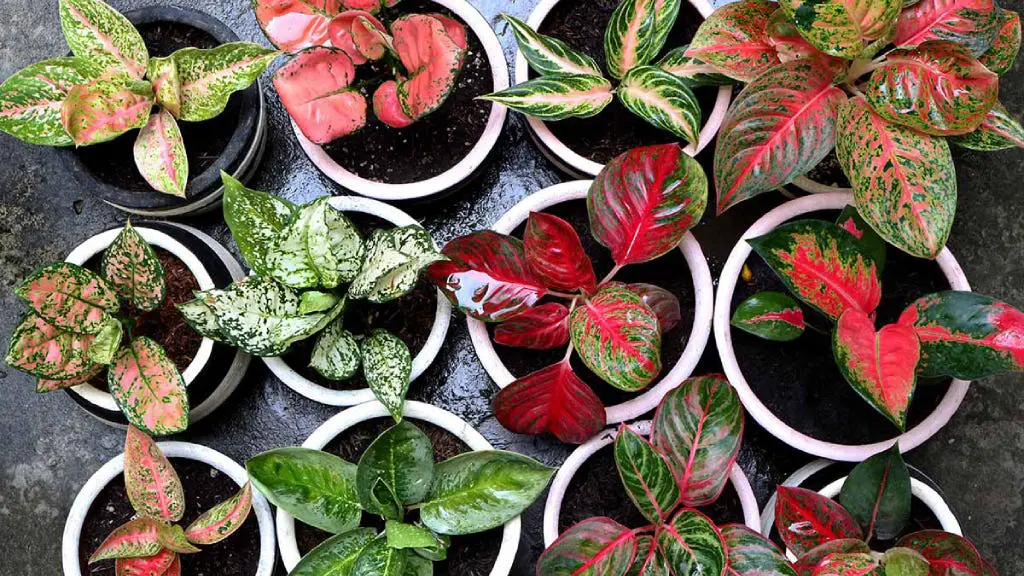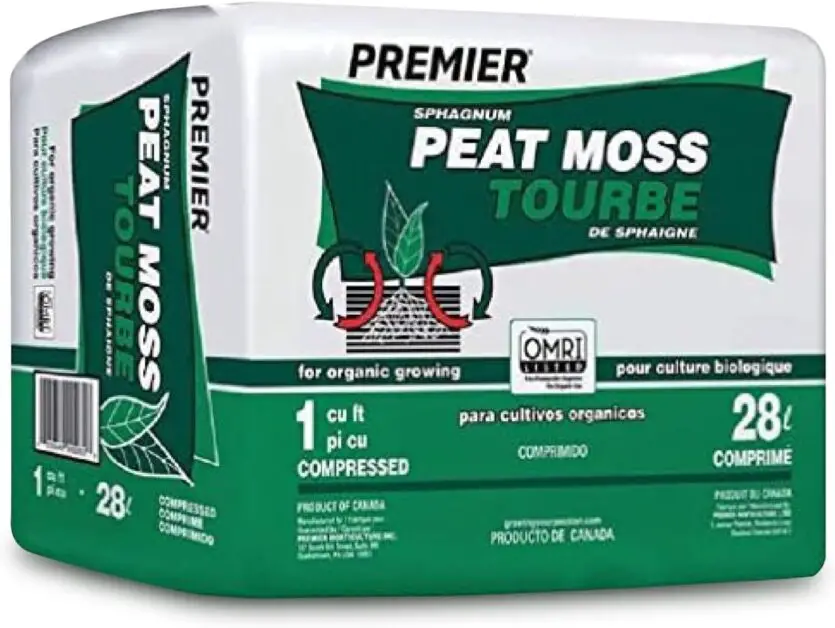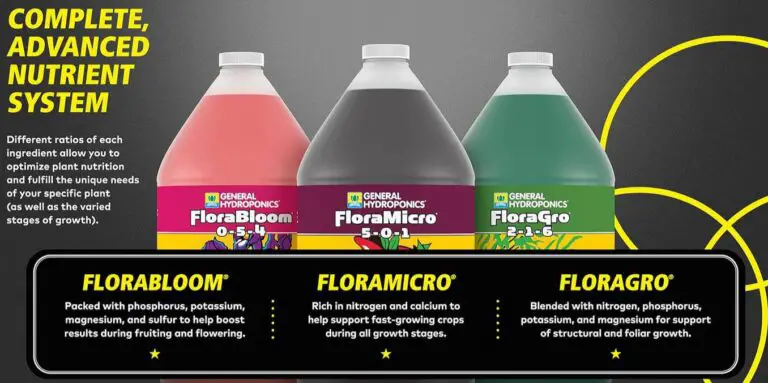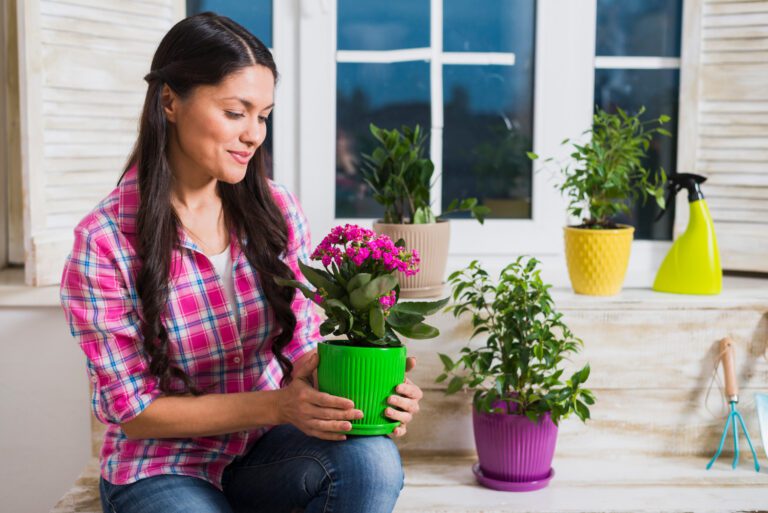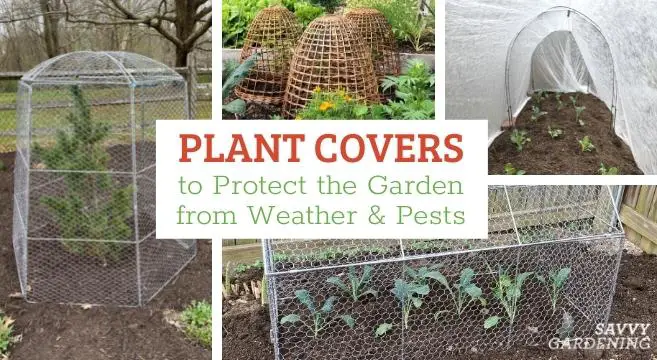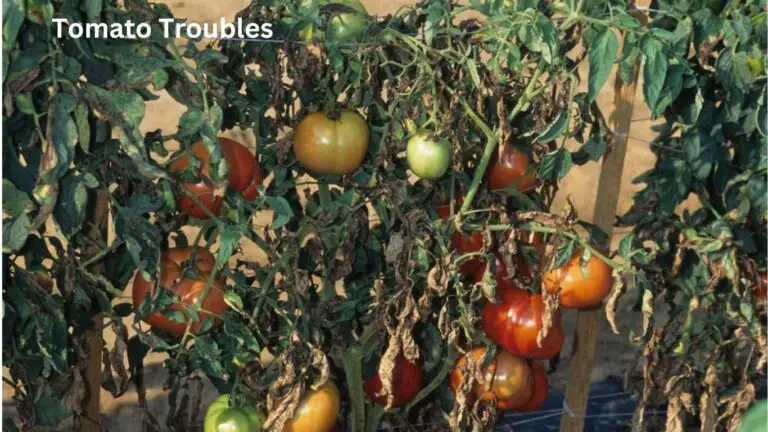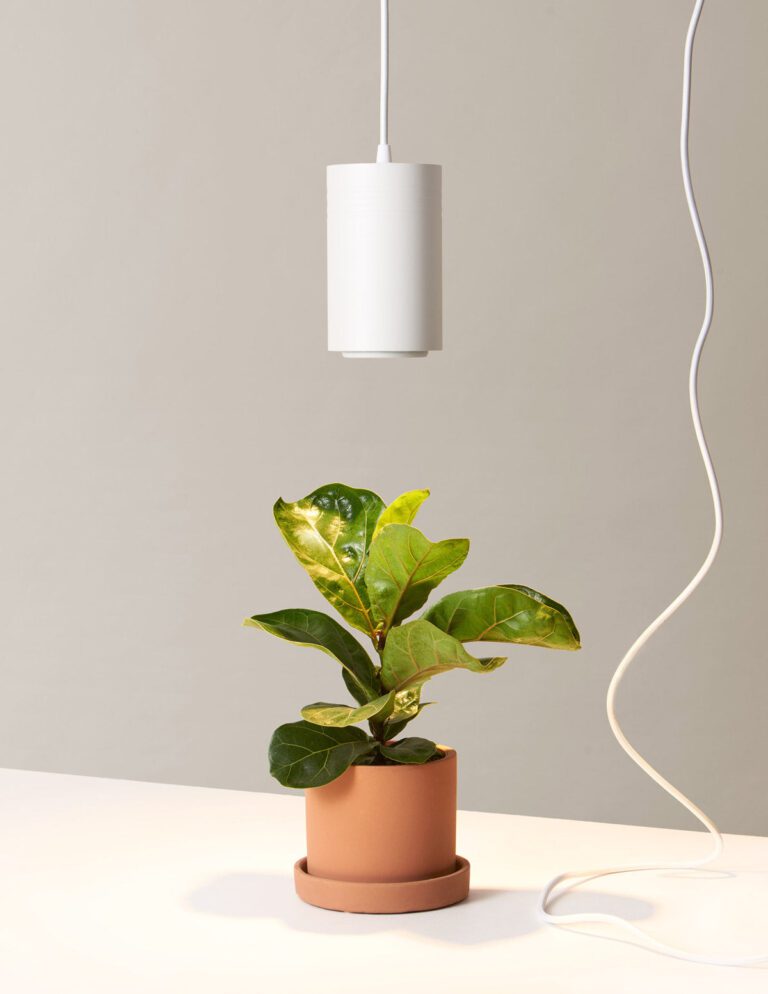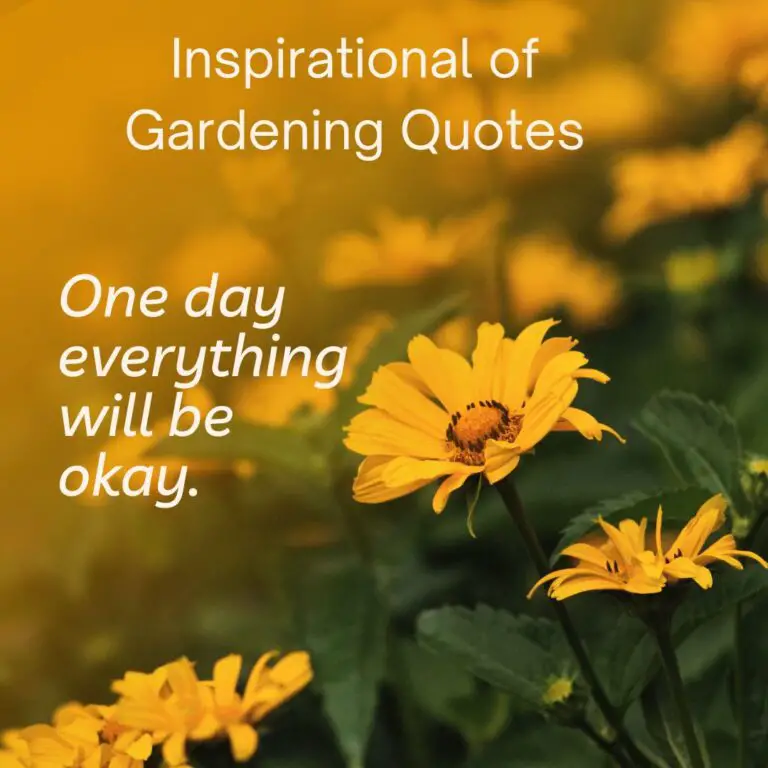Aglaonema Varieties: A Guide to 10 Stunning Plants
Are you ready to explore the captivating world of Aglaonema varieties and discover 10 stunning plants that will elevate your indoor greenery game? Did you know that Aglaonemas, also known as Chinese Evergreens, are not only beautiful but also low-maintenance and air-purifying? With their striking foliage patterns and vibrant colors, these plants are sure to add a touch of elegance to any space.
Join us on a botanical journey as we unveil a guide to 10 breathtaking Aglaonema varieties, sharing insights and tips to help you choose and care for these gorgeous plants with confidence. Get ready to transform your indoor oasis with the beauty of Aglaonemas. Let’s dive in and bring some green magic into your home!
Table of Contents
History and Origins of Aglaonema Plants
Aglaonema plants have a rich and fascinating history that dates back centuries. These stunning plants have their origins in the tropical regions of Southeast Asia, particularly in countries like China, Thailand, Indonesia, and Malaysia. Native to rainforests and other shaded areas, Aglaonemas have adapted to thrive in low light conditions, making them popular choices for indoor gardens and office spaces.
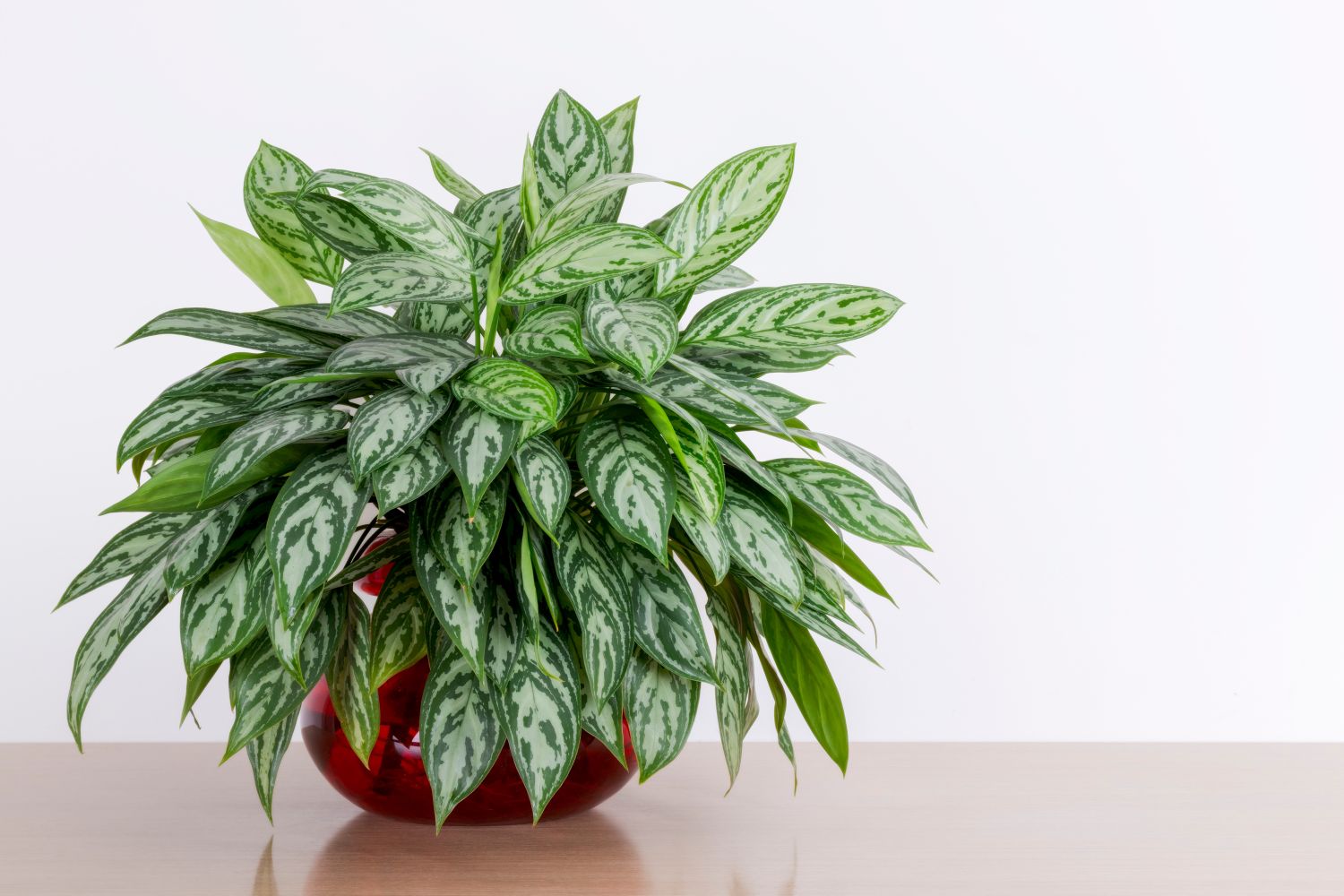
- Historical Roots:
- European botanists and horticulturists discovered Aglaonemas in the 18th century.
- Their unique variegated foliage and adaptability to less-than-ideal conditions fascinated early enthusiasts.
- Global Popularity:
- Aglaonemas have become popular worldwide due to their ease of care.
- They add exotic beauty to indoor spaces, making them a favorite among plant lovers.
- Cultivar Diversity:
- Extensive hybridization efforts have resulted in a wide variety of Aglaonema cultivars.
- Look for vibrant patterns, colors, and unique leaf shapes and sizes.
- Options for All:
- Whether you’re a beginner or an experienced collector, there’s an Aglaonema variety to suit your preferences.
- From easy-to-care-for options to rare show-stoppers, explore the world of Aglaonemas!
So, let’s delve deeper into the characteristics, care requirements, and exciting possibilities that Aglaonema plants have to offer.
Understanding the Characteristics of Aglaonema Varieties
Aglaonema plants are known for their wide range of characteristics, making them a popular choice among gardening enthusiasts.

- Growth Habit and Size: Aglaonema varieties vary in size and growth habit, with compact types like Aglaonema modestum reaching 1-2 feet in height, suitable for smaller spaces, while larger varieties like Aglaonema rotundum can grow up to 4 feet tall, adding drama to indoor or outdoor settings.
- Leaf Pattern and Color: Aglaonema varieties offer a diverse range of foliage options, including variegated, speckled, and solid colored leaves. For example, Aglaonema crispum features dark green leaves with silver-gray markings, while Aglaonema commutatum ‘Silver Queen’ boasts large, glossy leaves with green margins and silver veins, catering to various aesthetic preferences and décor styles.
- Lighting Tolerance: Different Aglaonema varieties exhibit varying tolerance levels to lighting conditions. Some thrive in low-light environments, making them suitable for areas with limited natural sunlight, while others require bright indirect light for optimal growth and development.
This variation in lighting requirements ensures that individuals can find an Aglaonema variety that suits the lighting conditions in their specific living or working space. Proper understanding of these characteristics will enable gardeners to select the most suitable Aglaonema variety for their needs, resulting in healthy and vibrant plants.
“Aglaonema: Popular mistakes in growing and caring for PLANT” proved to be an invaluable resource in my journey of nurturing Aglaonema plants. The concise yet comprehensive guide offered practical insights into common mistakes made during cultivation, empowering me to avoid pitfalls and optimize my plant care routine. From watering techniques to light requirements and pest control, the book provided actionable tips for maintaining healthy and thriving Aglaonema specimens, making it an essential reference for both novice and experienced plant enthusiasts alike.
However, I found the lack of visual aids, such as photographs or illustrations, somewhat limiting in visualizing specific plant care techniques or identifying common issues. Additionally, while the book addressed a wide range of topics related to Aglaonema care, some readers may prefer a more in-depth analysis or scientific explanations to complement the practical advice provided. Despite these minor drawbacks, “Aglaonema: Popular mistakes in growing and caring for PLANT” offers invaluable guidance for anyone looking to cultivate vibrant and resilient Aglaonema plants, ensuring a rewarding and fulfilling gardening experience.
- Informative Guide: “Aglaonema: Popular mistakes in growing and caring for PLANT” provides valuable insights into common mistakes made when growing Aglaonema plants, helping readers avoid pitfalls and cultivate healthier specimens.
- Practical Tips: Offers practical advice and recommendations for caring for Aglaonema plants, including watering, light requirements, soil conditions, and pest control, empowering readers to optimize their plant care routines.
- Comprehensive Coverage: Addresses a wide range of topics related to Aglaonema care, from propagation techniques to troubleshooting common issues, providing a holistic approach to plant cultivation.
- Easy to Understand: Written in clear and accessible language, making it suitable for both beginner and experienced plant enthusiasts.
- Concise Format: Presents information concisely, making it a quick and easy reference for busy gardeners seeking actionable tips for successful Aglaonema care.
- Limited Availability: Availability of the book may be restricted to certain regions or online platforms, potentially limiting access for some readers.
- Lack of Visuals: Some readers may find the absence of visual aids, such as photographs or illustrations, limiting in understanding specific plant care techniques or identifying common issues.
- Price: Depending on individual budget constraints, the price of the book may be considered relatively high compared to other plant care guides available.
- Specific Focus: The book’s focus on Aglaonema plants may not appeal to readers interested in a broader range of houseplant care topics.
- Lack of Depth: While informative, some readers may find the content lacking in-depth analysis or scientific explanations, preferring more detailed insights into plant physiology and growth habits.
Factors to Consider Before Choosing an Aglaonema Variety
When choosing an Aglaonema variety for your home or garden, there are several important factors to consider.
:strip_icc()/aglaonema-chinese-evergreen-varieties-967bf58ef41445c7bab796794fc841bd.jpg)
- Lighting Conditions:
- Aglaonemas thrive in bright, indirect light.
- Choose a variety based on the available light in your space.
- Some varieties, like ‘Silver Queen,’ tolerate lower light conditions.
- Others, like ‘Tricolor,’ require higher light levels for vibrant foliage.
- Temperature and Humidity:
- Aglaonemas prefer warmer temperatures (65°F to 80°F or 18°C to 27°C).
- High humidity is beneficial; consider bathrooms or kitchens.
- Some varieties, such as Aglaonema crispum, tolerate slightly lower humidity.
Overall, it is important to carefully evaluate the lighting, temperature, and humidity requirements of different Aglaonema varieties before making a selection. By understanding and considering these factors, you can ensure that you choose the right variety that will not only survive but also flourish in your specific growing environment.
The Importance of Proper Lighting for Aglaonema Plants
Proper lighting is crucial for the growth and overall health of Aglaonema plants. As an indoor plant variety, these plants heavily depend on the light they receive to carry out photosynthesis effectively. The right amount and quality of light not only contribute to their vibrant foliage but also influence their growth rate and resilience.

Watering and Humidity Requirements for Aglaonema Varieties
Watering and humidity requirements play a crucial role in the overall health and growth of Aglaonema varieties. As tropical plants native to the rainforests of Southeast Asia, these plants have specific needs when it comes to water and humidity levels.
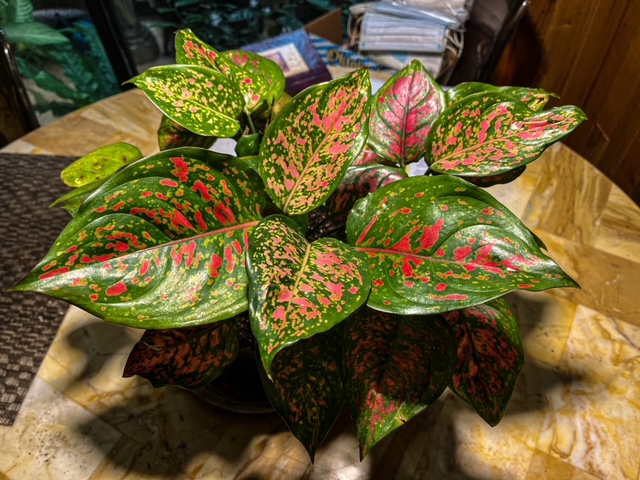
- Balanced Watering: Avoid overwatering, which can lead to root rot, and underwatering, which causes stress and wilting. Water when the top inch of the soil feels dry, adjusting frequency based on factors like season, temperature, and humidity.
- Seasonal Considerations: Increase watering during warmer months and if the plant is exposed to direct sunlight, and reduce frequency during cooler months or in shaded areas.
- Monitoring Moisture Levels: Regularly check soil moisture and adjust watering schedule accordingly to maintain optimal moisture levels.
- Humidity Requirements: Aglaonema varieties thrive in higher humidity environments, resembling their natural habitats. While they can tolerate lower humidity, they grow best with adequate moisture in the air.
- Humidity Enhancement Methods: Increase humidity by using a humidifier, especially during dry seasons, or create a local humidity microclimate by placing a tray of water near the plants or grouping them together to share moisture.
- Promoting Thriving Growth: By maintaining proper watering and humidity levels, you can ensure that your Aglaonema varieties thrive, displaying their beautiful foliage to its fullest potential.
Soil and Fertilizer Needs of Aglaonema Plants
Proper soil composition and appropriate fertilization are essential for the healthy growth of Aglaonema plants. These tropical beauties thrive in well-draining soil that retains moisture while preventing waterlogged conditions. A mixture of loamy soil, perlite, and peat moss is ideal for Aglaonema plants as it provides good aeration and moisture retention.

- Balanced Fertilization:
- Use a slow-release, balanced fertilizer with an NPK ratio of 20-20-20.
- Apply once a month during the growing season.
- Dilute the fertilizer to half the recommended strength to avoid root burn.
- Organic Options:
- Incorporate well-composted organic matter (e.g., worm castings or compost) into the soil.
- Provides gentle and steady nutrient supply.
- Enhances overall plant health.
Remember to maintain a balanced approach to fertilization for healthy and thriving Aglaonema plants! 🌱🌿🪴 : Information based on general knowledge of Aglaonemas and horticulture practices.
The following table explains about the soil and fertilizer needs of Aglaonema plants:
| Aspect | Soil Requirements | Fertilizer Needs |
|---|---|---|
| 1. Soil Type | Well-draining potting mix | Balanced liquid fertilizer (N-P-K: 10-10-10) every 4-6 weeks during growing season |
| 2. pH Level | Slightly acidic to neutral (pH 6.0-7.0) | Slow-release fertilizer pellets |
| 3. Moisture | Moist, but not waterlogged | Diluted liquid fertilizer (1/2 strength) every 2 months during dormant period |
| 4. Nutrients | Rich in organic matter | Foliar fertilizer spray every 2 months during growing season |
| 5. Micronutrients | Adequate levels of micronutrients | Micronutrient-rich fertilizer (Fe, Mn, Zn) twice a year |
| 6. Fertilizer Type | Complete balanced fertilizer with macro and micronutrients | Organic compost applied annually during spring |
Overall, understanding the soil and fertilizer needs of Aglaonema plants is crucial for their well-being. By providing the right composition of soil and the appropriate nutrients, you can ensure that your Aglaonema flourishes and remains a stunning addition to your indoor or outdoor garden.
Pruning and Repotting Techniques for Aglaonema Varieties
Pruning and repotting are important techniques to maintain the health and appearance of Aglaonema varieties. Pruning, or trimming, helps to control the size and shape of the plant, as well as promote new growth.

- Pruning Guidelines: Use clean, sharp tools to prevent disease spread. Remove dead or yellowing leaves at the base of the stem. Trim damaged or diseased branches to prevent further spread and encourage branching for a fuller appearance.
- Timing for Pruning: Perform pruning in late winter or early spring when the plant is actively growing.
- Repotting Necessities: Repot Aglaonema when it outgrows its current pot or when soil becomes compacted, typically during spring or early summer.
- Repotting Process: Carefully remove the plant from its current container and gently loosen the root ball. Place it in a slightly larger pot with well-draining potting mix, filling gaps with soil and pressing lightly for stability.
- Post-Repotting Care: After repotting, water thoroughly and provide adequate light and humidity for successful acclimatization.
Remember, Aglaonema prefers slightly crowded pots, so avoid choosing pots that are excessively large. Proper pruning and repotting techniques will help ensure the long-term health and vitality of your Aglaonema varieties.
Common Pests and Diseases that Affect Aglaonema Plants
Aglaonema plants are generally hardy and resistant to pests and diseases. However, they are still susceptible to a few common issues that can affect their health and overall appearance. It is important for gardeners and plant enthusiasts to be aware of these potential problems and take preventive measures to keep their Aglaonema plants thriving.
| Disease | Symptoms | Treatment | Effect on Plant |
|---|---|---|---|
| Root Rot | – Yellowing leaves- Wilting<br>- Stunted growth | – Remove the plant from soil- Cut away diseased roots- Repot in well-draining fresh soil | Lack of oxygen due to rotting roots |
| Leaf Spot | – Brown or black spots on leaves | – Remove affected leaves- Clean remaining foliage with fungicide solution- Improve air circulation | Weakening of the plant over time |
| Spider Mites | – Yellowing leaves- Wilting- Tiny pests on leaves- Sap-sucking damage | – Isolate infected plant- Wipe leaves with rubbing alcohol using a cotton swab- Repeat process | Damage to leaves due to sap loss |
| Mealybugs | – Small white fuzzy insects on stems- Sap-sucking damage | – Wipe leaves with rubbing alcohol using a cotton swab- Repeat process | Weakening and eventual death of the plant |
Remember, proactive measures such as maintaining proper humidity levels, providing adequate ventilation, and practicing good hygiene by regularly cleaning the plants and their surroundings can help prevent the occurrence of these pests in the first place. By being vigilant and taking appropriate actions, you can ensure that your Aglaonema plants remain healthy and vibrant for years to come.
Tips for Propagating Aglaonema Varieties
Propagation is an exciting way to expand your collection of Aglaonema varieties. By following a few essential tips, you can ensure a successful propagation process and enjoy the satisfaction of nurturing new plants. Aglaonemas can be propagated through stem cuttings, and here are some guidelines to help you in this process.

- Selecting the Stem Cutting: Choose a healthy Aglaonema plant with a stem approximately 4-6 inches long and multiple leaves. Ensure the stem is robust and free from any signs of disease or damage.
- Preparing the Cutting: With clean and sharp pruning shears, make a clean cut just below a leaf node on the selected stem. Remove any lower leaves, leaving only a few at the top to support growth.
- Preparing the Rooting Medium: Use a suitable rooting medium such as a mix of peat moss and perlite or a well-draining soilless mix. Moisten the medium slightly to create a conducive environment for root development.
- Inserting the Stem Cutting: Make a small hole in the rooting medium and insert the stem cutting, ensuring that at least one node is buried in the medium. Gently press the medium around the stem to provide stability and support.
The following table explains about the tips for propagating Aglaonema varieties:
| Propagation Method | Success Rate (%) | Time to Rooting (weeks) | Optimal Temperature (°F) | Optimal Humidity (%) |
|---|---|---|---|---|
| 1. Stem Cuttings | 80-90 | 4-6 | 70-80 | 70-80 |
| 2. Leaf Cuttings | 70-80 | 6-8 | 70-80 | 70-80 |
| 3. Division | 90-95 | 4-6 | 70-80 | 70-80 |
Premier Horticulture Peat Moss has been a game-changer in my gardening endeavors. As a soil conditioner, it enhances soil structure, improves aeration, and retains moisture, creating optimal conditions for plant growth. I’ve observed significant improvements in the health and vitality of my plants since incorporating this product into my gardening routine. Its organic composition aligns with my commitment to sustainable gardening practices, and I appreciate its versatility in promoting healthy growth for a variety of plants, from flowers to vegetables.
However, I’ve noticed that peat moss has a low nutrient content, necessitating additional fertilization to meet the nutritional needs of certain plants. Additionally, concerns about the environmental impact of peat moss harvesting have prompted me to explore alternative soil amendments. Despite these considerations, Premier Horticulture Peat Moss remains an essential tool in my gardening arsenal, providing valuable benefits in soil conditioning and plant health.
✅ Organic and Sustainable: Made from natural sphagnum peat moss, this product is environmentally friendly and suitable for organic gardening practices, reducing the reliance on synthetic additives.
✅ Moisture Retention: Peat moss has excellent water-holding capacity, helping plants retain moisture during dry periods and reducing the frequency of watering, ideal for drought-prone areas or moisture-sensitive plants.
✅ pH Adjustment: It can help lower soil pH levels, making it suitable for acid-loving plants such as azaleas, blueberries, and rhododendrons, providing optimal growing conditions.
✅ Weed Prevention: When used as a mulch or soil cover, peat moss helps suppress weed growth, reducing the need for herbicides and minimizing weed competition with cultivated plants.
❌ Environmental Concerns: Peat moss harvesting can impact fragile peatland ecosystems and contribute to carbon dioxide emissions, raising environmental concerns about sustainability and habitat destruction.
❌ Decomposition Rate: Peat moss decomposes slowly over time, necessitating periodic replenishment to maintain soil structure and fertility, adding to the long-term cost of gardening.
❌ Soil Compaction: Excessive use of peat moss without proper soil amendments can lead to soil compaction over time, reducing soil porosity and root penetration, negatively impacting plant health.
❌ pH Imbalance: While beneficial for acid-loving plants, peat moss may not be suitable for plants that prefer alkaline soil conditions, requiring careful consideration of plant requirements and soil composition.
Exploring Different Aglaonema Varieties: Colors and Patterns
Aglaonema varieties are renowned for their stunning range of colors and patterns, making them a popular choice among plant enthusiasts. These plants exhibit an array of vibrant hues and intricate markings, adding a touch of elegance and visual appeal to any indoor space. From deep greens to shades of pink, silver, and red, Aglaonema varieties offer a rich tapestry of colors that can complement different interior styles and personal preferences.
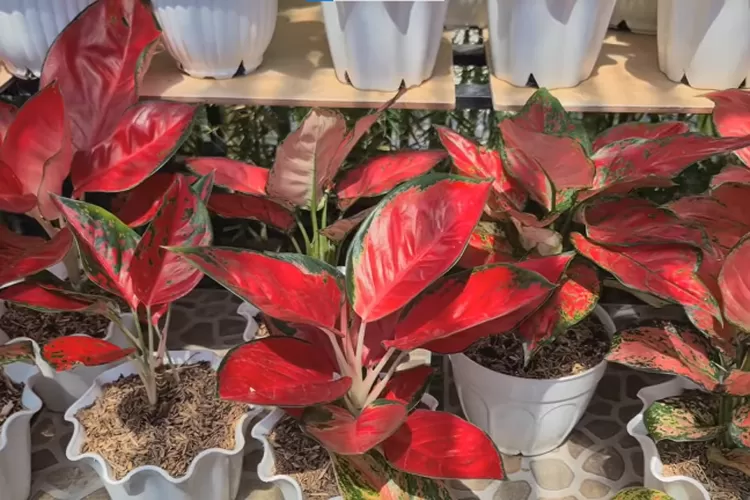
- Aglaonema ‘Red Siam’: With its striking red and green foliage, this variety makes a bold and dramatic statement in any indoor garden, commanding attention as a focal point.
- Aglaonema ‘Silver Bay’: Featuring luscious silvery-gray leaves adorned with delicate dark green veins, this variety exudes sophistication and perfectly complements contemporary or minimalist interiors.
- Aglaonema ‘Pink Dalmatian’: Characterized by its unique pattern of pink speckles on rich green leaves, this variety offers a captivating contrast that adds whimsy and charm to indoor spaces.
- Aglaonema ‘Emerald Beauty’: Displaying deep green leaves accented by elegant silver veins, this variety provides a classic and refined aesthetic, enhancing the beauty of any indoor environment.
No matter your color preferences or interior styling, there is an Aglaonema variety that can meet your needs and delight your senses. These remarkable plants bring together nature’s artistry and captivating shades, transforming your indoor spaces into lush and visually captivating gardens. So, why not explore the world of Aglaonema colors and patterns and discover the perfect variety to elevate your botanical collection?
Aglaonema Varieties Ideal for Low Light Conditions
Aglaonema varieties that thrive in low light conditions are excellent choices for indoor gardens or spaces with limited access to natural sunlight. These plants have adapted to survive in shady environments, making them ideal for areas where direct sunlight is scarce. While low light conditions may pose a challenge for some plants, Aglaonema varieties are known for their ability to thrive in dimly lit spaces.
- Aglaonema Silver Bay:
- Beautiful silver-green leaves with striking patterns.
- Tolerates low light levels.
- Ideal for offices or areas with minimal natural illumination.
- Aglaonema Pictum Tricolor:
- Features vibrant foliage with splashes of pink, cream, and green.
- Thrives in low light conditions.
- Adds a pop of color to darker spaces.
Both of these Aglaonema varieties are resilient and adaptable, making them excellent choices for indoor gardening in dimly lit areas. 🌿🌱 .
Aglaonema Varieties That Thrive in Bright Indirect Light
To thrive in bright indirect light, Aglaonema varieties require certain characteristics that make them well-suited for this specific growing condition.
- Natural Habitat Adaptations: Evolved to thrive in filtered sunlight typical of their natural habitats, where dappled light filters through the forest canopy, making them more tolerant of brighter light levels.
- Aglaonema ‘Silver Bay’: Flourishes in bright indirect light, featuring dark green leaves with silver markings that add visual appeal to indoor spaces.
- Aglaonema ‘Emerald Beauty’: Thrives in bright indirect light conditions, boasting vivid green leaves with unique blotching patterns, enhancing room aesthetics with lush foliage.
- Practical Advantage: These varieties require less care and attention regarding light management, making them suitable for placement in areas with larger windows or well-lit corners.
- Sunlight Management: While tolerant of brighter light, it’s essential to avoid exposing them to direct sunlight, as it can scorch their leaves and impede growth.
Popular Aglaonema Varieties for Variegated Foliage
Aglaonema plants are beloved for their stunning foliage, and variegated varieties are particularly sought after for their unique and eye-catching patterns. These popular Aglaonema varieties showcase an exceptional display of colors and markings on their leaves, adding a vibrant touch to any indoor space.

Broad leaves adorned with striking silver and green variegation.
Creates a mesmerizing effect, brightening up any room.
Resilient and relatively low maintenance.
Deep green leaves accentuated by bold splashes of red.
Adds elegance and sophistication to interior design.
Known for durability and adaptability.
Leaves with deep green edges fading to a creamy white center.
Visually captivating contrast.
Relatively easy to care for.
These popular Aglaonema varieties with variegated foliage offer a wide range of colors and patterns that can transform any indoor environment into a vibrant and visually appealing oasis. Whether you prefer soft silver tones, bold red splashes, or striking contrasts, there is a variegated Aglaonema variety to suit every taste and style.
Aglaonema Varieties Suitable for Small Spaces and Containers
Small spaces and containers shouldn’t limit your options when it comes to growing Aglaonema varieties. These versatile plants are well-suited for confined spaces and can thrive in containers of various sizes. With their compact growth habit and adaptability, Aglaonema varieties are the perfect choice for urban dwellers, apartment owners, or anyone looking to bring some greenery into their limited living spaces.

- Aglaonema Emerald Beauty:
- Compact variety with lush green foliage and striking silver markings.
- Adds elegance to any space.
- Improves air quality by purifying the surrounding environment.
- Aglaonema Silver Bay:
- Known for attractive silver-green leaves and compact size.
- Ideal for small spaces.
- Also contributes to air purification.
When selecting Aglaonema varieties for small spaces and containers, consider their growth potential and adaptability. Opt for compact varieties that won’t outgrow their allotted space and can thrive comfortably in containers. Proper drainage is essential to prevent waterlogging and root rot. With care, these Aglaonema varieties will flourish even in the tiniest corners of your home, bringing a touch of nature indoors. 🌿🌱 .
Aglaonema Varieties with Unique Leaf Shapes and Sizes
Aglaonema plant varieties with unique leaf shapes and sizes offer a visually striking addition to any indoor garden or workspace. These intriguing varieties showcase nature’s creativity and showcase the plant’s ability to adapt and diversify.
- Aglaonema ‘Silver Bay’: Featuring oval-shaped leaves with a silvery-gray coloration, this variety exudes elegance and sophistication, making it an excellent addition to any space.
- Aglaonema ‘Red Peacock’: With striking, elongated foliage in vibrant shades of reddish-pink and green, this variety serves as a focal point, adding a pop of color and intrigue to indoor settings.
- Aglaonema ‘Creta’: Ideal for those seeking unique leaf sizes, the ‘Creta’ variety boasts larger-than-usual leaves, making it a captivating centerpiece that demands attention. Its variegated foliage blends shades of green, silver, and cream, adding an extra layer of visual interest.
- Creativity in Design: These Aglaonema varieties with unique leaf shapes and sizes offer endless opportunities for creativity in plant arrangements and interior design, catering to a variety of preferences.
- Versatility: Whether you prefer smaller, elongated leaves or larger, oval-shaped ones, there is an Aglaonema variety to suit your preferences, showcasing the versatility of the Aglaonema plant family in enhancing living or working spaces.
Rare and Exotic Aglaonema Varieties for Plant Enthusiasts
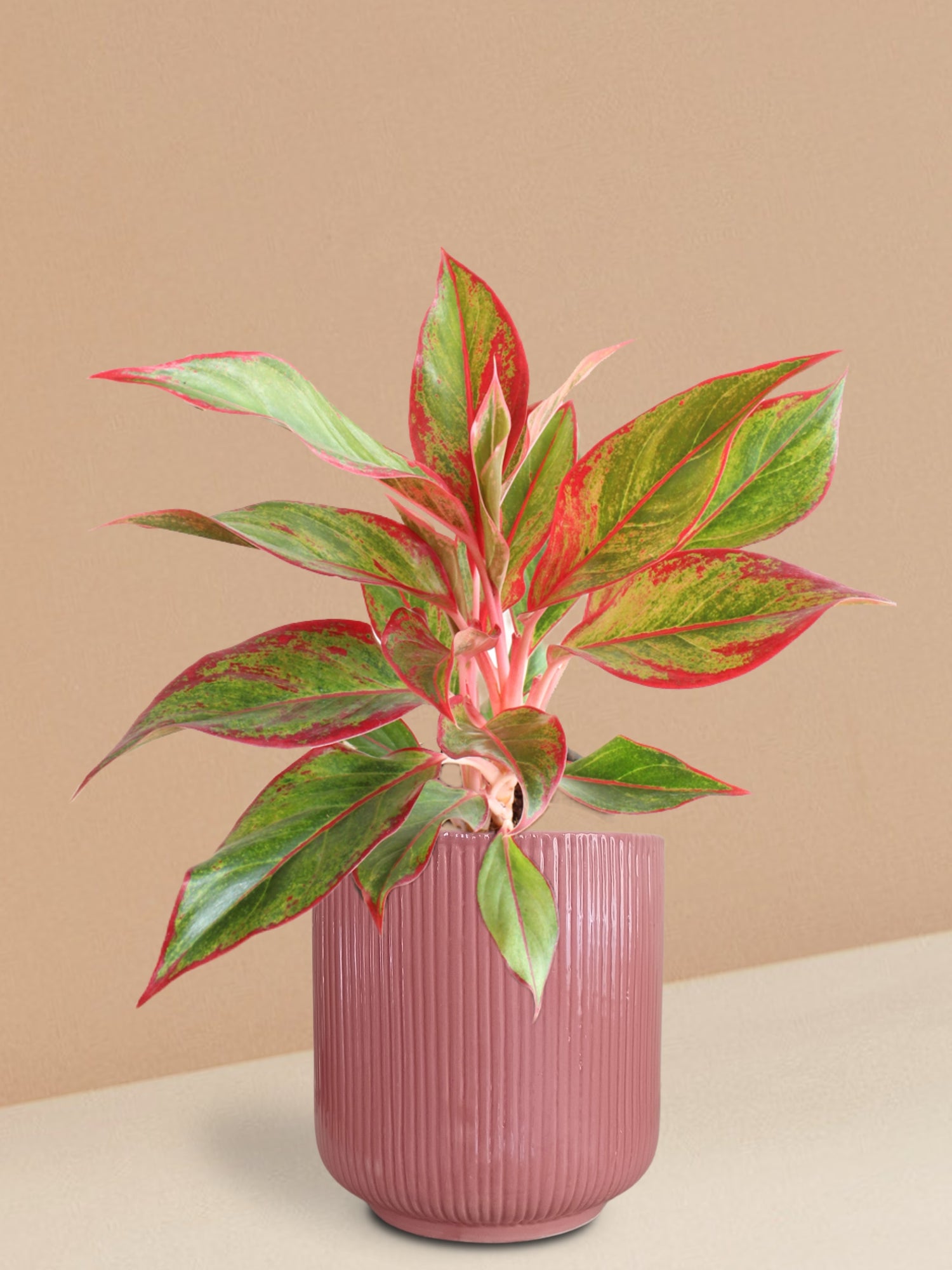
Rare and exotic Aglaonema varieties are a coveted addition to any plant enthusiast’s collection. These unique plants boast captivating features that set them apart from more common varieties. With their striking colors, intricate patterns, and extraordinary leaf shapes, rare Aglaonema varieties add a touch of elegance and intrigue to any indoor space.
- Aglaonema pictum ‘Tricolor’: This rare variety showcases a stunning array of colors on its foliage, including deep green, vibrant pink, and cream, creating a mesmerizing tapestry that serves as a focal point in any room.
- Aglaonema ‘Silver Queen’: Characterized by its silvery-white leaves with a lustrous sheen and subtle green veins, this rare variety adds sophistication to interior designs with its ethereal beauty.
- Highly Sought After: Rare and exotic Aglaonema varieties like these are prized by plant enthusiasts for their distinctiveness and rarity, offering a unique opportunity to showcase appreciation for the diversity of the plant world.
- Exquisite Centerpieces: With proper care and attention, these extraordinary Aglaonema specimens can thrive and become exquisite centerpieces in any plant lover’s collection, elevating the aesthetic appeal of indoor spaces.
Watch video for more information:
FAQ
Can Aglaonema plants survive in low light conditions?
Yes, there are Aglaonema varieties that are specifically suited for low light conditions. These plants have adapted to thrive in areas with minimal sunlight.
How often should I water my Aglaonema plant?
The watering frequency for Aglaonema plants depends on various factors such as the size of the pot, the type of soil, and the humidity levels. It is generally recommended to water the plants when the top inch of the soil feels dry to the touch.
Are Aglaonema plants prone to any specific pests or diseases?
Aglaonema plants can be susceptible to common houseplant pests such as spider mites, mealybugs, and scale insects. They can also be affected by fungal diseases if the conditions are too humid or if there is poor air circulation around the plant.
What are the ideal lighting conditions for Aglaonema plants?
Aglaonema plants prefer bright indirect light. They can tolerate lower light conditions, but too much direct sunlight can scorch their leaves. Placing them near a window with filtered light or providing them with artificial light can be beneficial.
What are the ideal lighting conditions for Aglaonema plants?
Aglaonema plants prefer bright indirect light. They can tolerate lower light conditions, but too much direct sunlight can scorch their leaves. Placing them near a window with filtered light or providing them with artificial light can be beneficial.
How often do I need to fertilize my Aglaonema plant?
Aglaonema plants benefit from regular feeding during the growing season. It is recommended to fertilize them every 2-4 weeks using a balanced houseplant fertilizer. During the dormant period, fertilizing can be reduced or stopped.
Can I propagate Aglaonema plants myself?
Yes, Aglaonema plants can be propagated through stem cuttings. Select a healthy stem with a few leaves and place it in a container with moist potting mix. Ensure that the cutting receives indirect light and maintain appropriate moisture levels until roots develop.
Can Aglaonema plants be grown in small spaces or containers?
Yes, there are Aglaonema varieties that remain compact and are suitable for small spaces or containers. These plants can add a touch of greenery to any limited space, making them a popular choice for indoor gardening.
Are there any Aglaonema varieties with unique leaf shapes and sizes?
Yes, some Aglaonema varieties showcase unique leaf shapes and sizes. These variations in foliage make them visually appealing and add a distinct touch to any plant collection.
How do I care for rare and exotic Aglaonema varieties?
Rare and exotic Aglaonema varieties require similar care as other Aglaonema plants. However, they may have specific requirements depending on their individual characteristics. It is important to research and understand the specific needs of each variety to provide proper care.

Studied Agricultural Engineering-Plant Protection at University of California, Davis.
Head of Content writing team at Southelmontehydroponics.com

